Breadcrumb

A subspace method for the blind identification of multiple time-varying FIR channels
A new method is proposed for the blind subspace-based identification of the coefficients of time-varying (TV) single-input multiple-output (SIMO) FIR channels. The TV channel coefficients are represented via a finite basis expansion model, i.e. linear combination of known basis functions. In contrast to earlier related works, the basis functions need not be limited to complex exponentials, and therefore do not necessitate the a priori estimation of frequency parameters. This considerably simplifies the implementation of the proposed method and provides added flexibility in applications. The
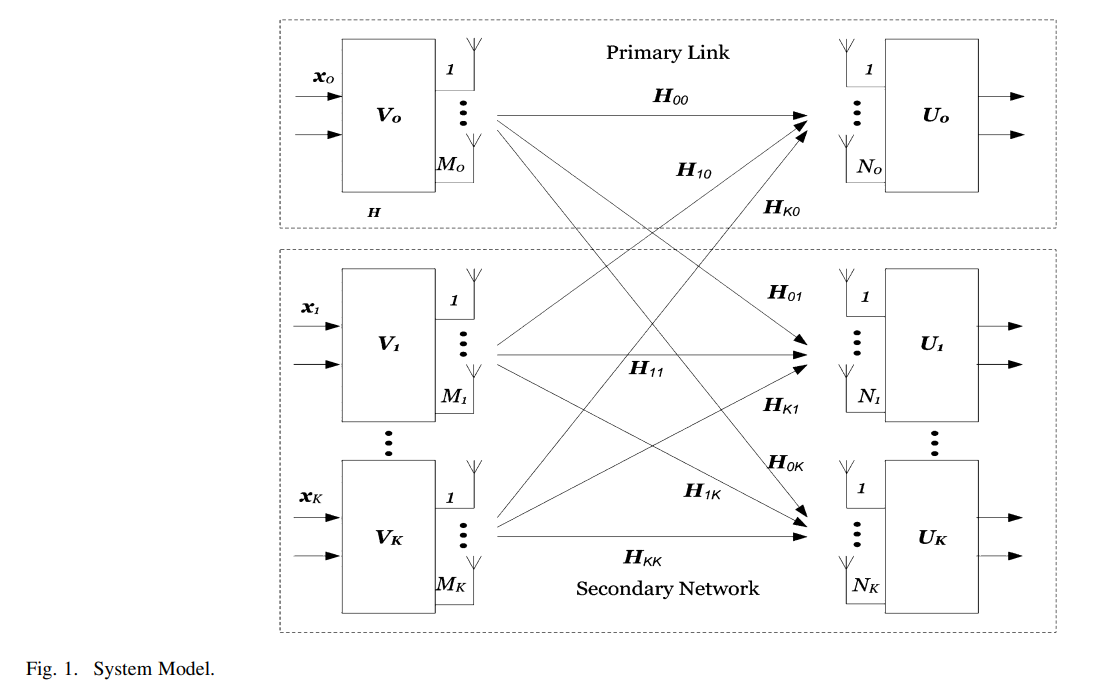
Constrained interference alignment and the spatial degrees of freedom of mimo cognitive networks
An interference alignment (IA) scheme is presented that allows multiple opportunistic transmitters (secondary users) to use the same frequency band of a pre-existing primary link without generating any interference. The primary and secondary transmit-receive pairs are equipped with multiple antennas. Under power constraints on the primary transmitter, the rate of the primary user is maximized by water-filling on the singular values of its channel matrix leaving some eigen modes unused, and hence, the secondary users can align their transmitted signals to produce a number of interference-free

Optimizing Cooperative Cognitive Radio Networks Performance with Primary QoS Provisioning
We consider the problem of optimizing the performance of a cooperative cognitive radio user subject to constraints on the quality-of-service (QoS) of the primary user (PU). In particular, we design the probabilistic admission control parameter of the PU packets in the secondary user (SU) relaying queue and the randomized service parameter at the SU under non-work-conserving (non-WC) and WC cooperation policies. In the non-WC policy, two constrained optimization problems are formulated; the first problem is maximizing the SU throughput while the second problem is minimizing the SU average delay
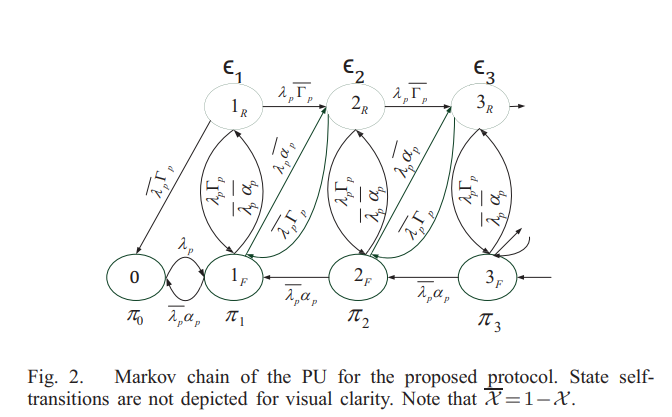
Maximum throughput of a secondary user cooperating with an energy-aware primary user
This paper proposes a cooperation protocol between a secondary user (SU) and a primary user (PU) which dedicates a free frequency subband for the SU if cooperation results in energy saving. Time is slotted and users are equipped with buffers. Under the proposed protocol, the PU releases portion of its bandwidth for secondary transmission. Moreover, it assigns a portion of the time slot duration for the SU to relay primary packets and achieve a higher successful packet reception probability at the primary receiver. We assume that the PU has three states: idle, forward, and retransmission states
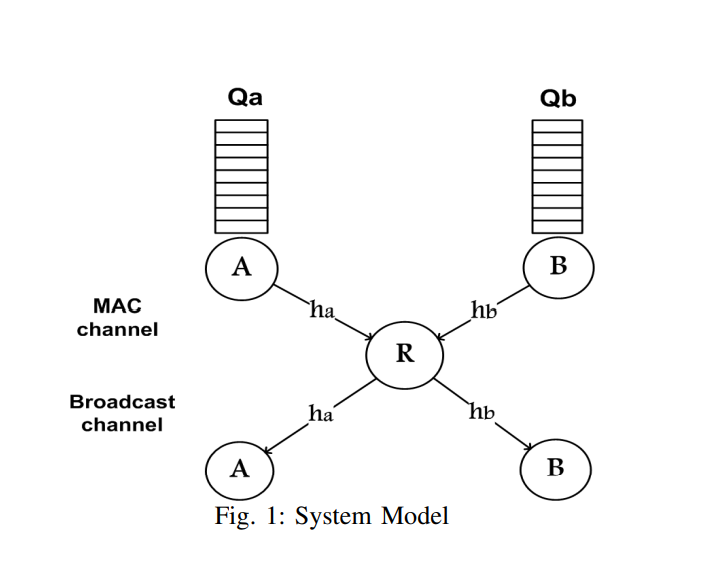
Maximum throughput opportunistic network coding in Two-Way Relay networks
In this paper, we study Two-Way Relaying (TWR) networks well-known for its throughput merits. In particular, we study the fundamental throughput delay trade-off in TWR networks using opportunistic network coding (ONC). We characterize the optimal ONC policy that maximizes the aggregate network throughput subject to an average packet delay constraint. Towards this objective, first, we consider a pair of nodes communicating through a common relay and develop a two dimensional Markov chain model capturing the buffers' length states at the two nodes. Second, we formulate an optimization problem
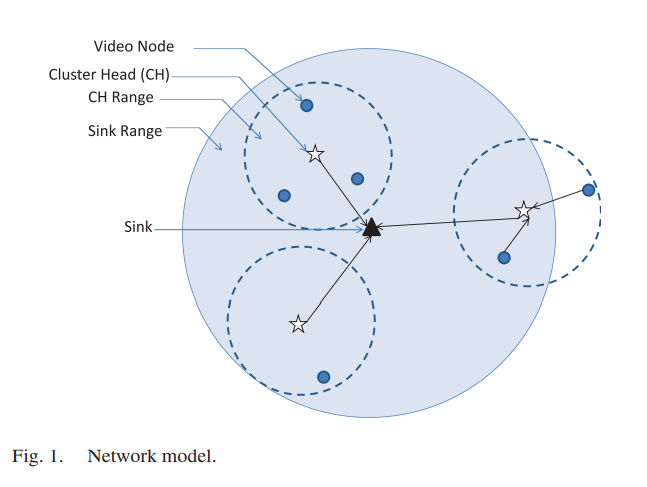
Optimal resource allocation for green and clustered video sensor networks
Wireless video sensor networks (WVSNs) are opening the door for many applications, such as industrial surveillance, environmental tracking, border security, and infrastructure health monitoring. In WVSN, energy conservation is very essential because: 1) sensors are usually battery-operated and 2) each sensor node needs to compress the video prior to transmission, which consumes more power than conventional wireless sensor networks. In this paper, we study the problem of minimizing the total power consumption in a cluster-based WVSN, leveraging cross-layer design to optimize the encoding power

Leveraging primary feedback and spectrum sensing for cognitive access
We consider a time-slotted primary system where both the primary channel and primary activity are modeled as two independent two-state Markov chains. The primary transmitter can be idle or busy, whereas the channel can be in erasure or not. Moreover, the sensing channel between the primary transmitter and secondary transmitter is modeled as a two-state Markov chain to represent two levels of sensing reliability. At the beginning of each time slot, the secondary transmitter may remain idle, transmit directly, or probe the channel and access the channel only if it is sensed to be free. At the
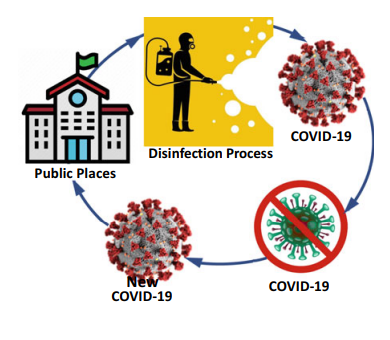
Optimum Scheduling of the Disinfection Process for COVID-19 in Public Places with a Case Study from Egypt, a Novel Discrete Binary Gaining-Sharing Knowledge-Based Metaheuristic Algorithm
The aim of this paper is to introduce an improved strategy for controlling COVID-19 and other pandemic episodes as an environmental disinfection culture for public places. The scheduling aims at achieving the best utilization of the available working day-time hours, which is calculated as the total consumed disinfection times minus the total loosed transportation times. The proposed problem in network optimization identifies a disinfection group who is likely to select a route to reach a subset of predetermined public places to be regularly disinfected with the most utilization of the
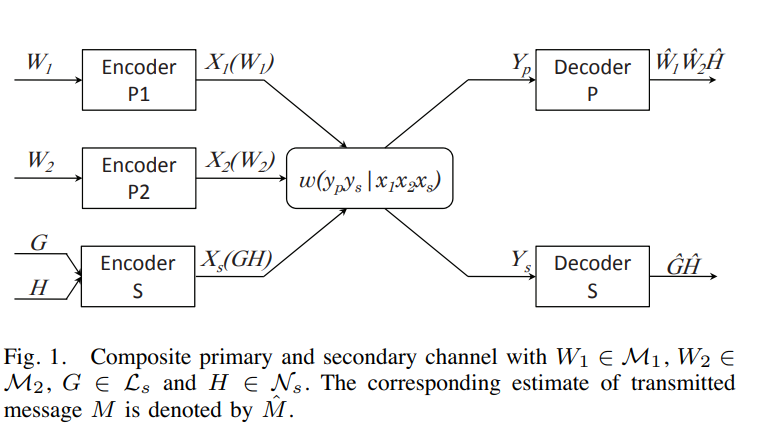
An achievable rate region for a primary network shared by a secondary link
We consider a multiple access primary network with N transmitters. A secondary link of one transmitter and a corresponding receiver causes interference to the primary network. An achievable rate region for the primary network and the secondary link is obtained given the following mode of operation. The secondary transmitter employs rate-splitting so that the primary receiver can decode part of the secondary's signal and cancel it. The secondary receiver, on the other hand, treats primary interference as noise. Given a Gaussian channel model, we investigate the effect of rate-splitting on the
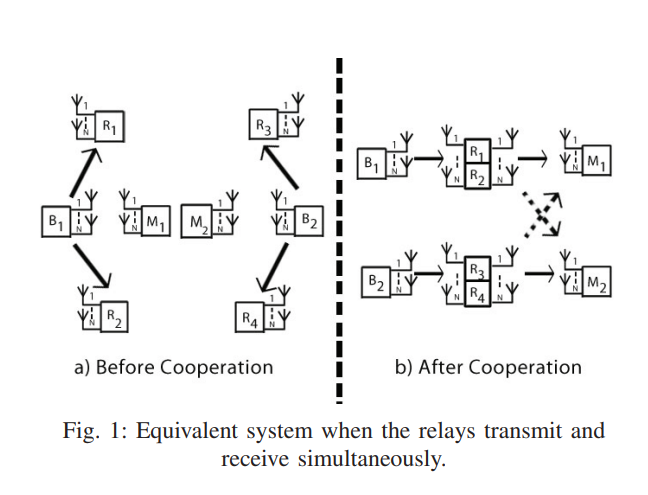
Alternate relaying and the degrees of freedom of one-way cellular relay networks
In this paper, a cellular relaying network consisting of two source-destination pairs, and four decode-and-forward relays operating in half-duplex mode is considered. Each source is assisted by two relays and all nodes are equipped with N antennas. In order to compensate for the loss of capacity by a factor of half due to the half-duplex mode, an alternate transmission protocol among the two relays is proposed. An outer bound on the degrees of freedom (DoF) of this system is developed. A constructive proof of achievability based on two different schemes is provided. Aligning the inter-relay
Pagination
- Previous page ‹‹
- Page 13
- Next page ››
